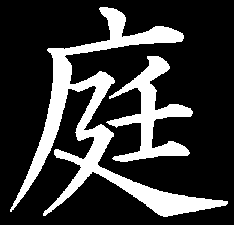|
Advanced Pruning
 JOJG
usually publishes one advanced pruning article in each issue. These landmark articles
offer English-language pruning information that is unique and available
nowhere else in the world. Some Japanese garden professionals
subscribe to JOJG specifically for these articles.
JOJG
usually publishes one advanced pruning article in each issue. These landmark articles
offer English-language pruning information that is unique and available
nowhere else in the world. Some Japanese garden professionals
subscribe to JOJG specifically for these articles.
Aesthetic and design considerations are a big part of advanced pruning. Article topics include subjects such as how to create specimen trees, how to develop naturalistic branching patterns, and how to integrate multiple trees and shrubs in a sophisticated garden composition.
Most of the specialists who write JOJG's pruning articles are ISA certified arborists, but these pruning articles go well beyond big tree aboriculture and the techniques employed by Western tree care professionals.
JOJG's inventory of advanced pruning articles totals more than 50 published articles. Here are a few of them for you perusal:
----------------------------------------------------
CREATING CASCADING BRANCHES Most trees (and their branches) tend to grow upward in a competitive search for sunlight. But Japanese gardens treasure weathered specimen trees with cascading branches. This article explains how to use moderate selective pruning to train cascading branches.
DESIGNING THE HEAD OF A TREE This article is about pruning the tops of Japanese garden specimen trees. In Japanese gardens, the head of each tree most be carefully developed and controlled over decades in order to slowly develop S-shaped trunks and to limit final tree height. This article explains the whole process and discusses topics such as size, shape, position, and proportion.
BRANCH SELECTION FOR S-SHAPED TRUNKS In Japanese gardens, the ideal tree does not have a straight trunk, and its main branches are selected and developed based on their position on the trunk. This article explains the process.
RADIAL BRANCH DISTRIBUTION This 4-page pruning article is about the radial distribution of branches and foliage in a Japanese garden specimen tree. When viewed from above, a Japanese garden specimen tree will have an excess of branches on the back side and fewer branches on the side facing the viewer. This pruning article discusses why the pattern is ideal and illustrates proper pruning techniques to achieve it.
BIRDS-EYE BRANCHING PATTERNS When viewed from above, the perfect branch displays fan-like branch ramification. This article explains that specific pattern and how to create it over time using selective pruning techniques.
DEVELOPING SPACE BETWEEN BRANCHES All skilled arborists know that the space between branches is every bit as important as the branches themselves. This article discusses that space and how to create it.
SELECTING THE FRONT OF A TREE Japanese garden specimen trees are usually opened up in front to display trunk shapes and natural branching patterns. This is the opposite of Western sensibilities, where landscapers tend to position the side of the tree with the densest foliage toward the viewer.
MAKE IT THINNER ON TOP - HERE'S WHY This article discusses foliage density and the goals for newly pruned trees. The article explains why the skilled Japanese gardener always ensures that lower branches remain dense with foliage, even while thinning out the head and upper branches.
MULTI-TRUNK REHAB This article describes proper pruning techniques that can be used to convert multi-trunk shrubs into specimen trees.
--------------------------------------------------------------
